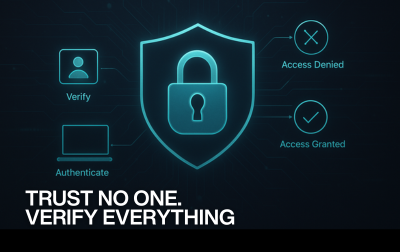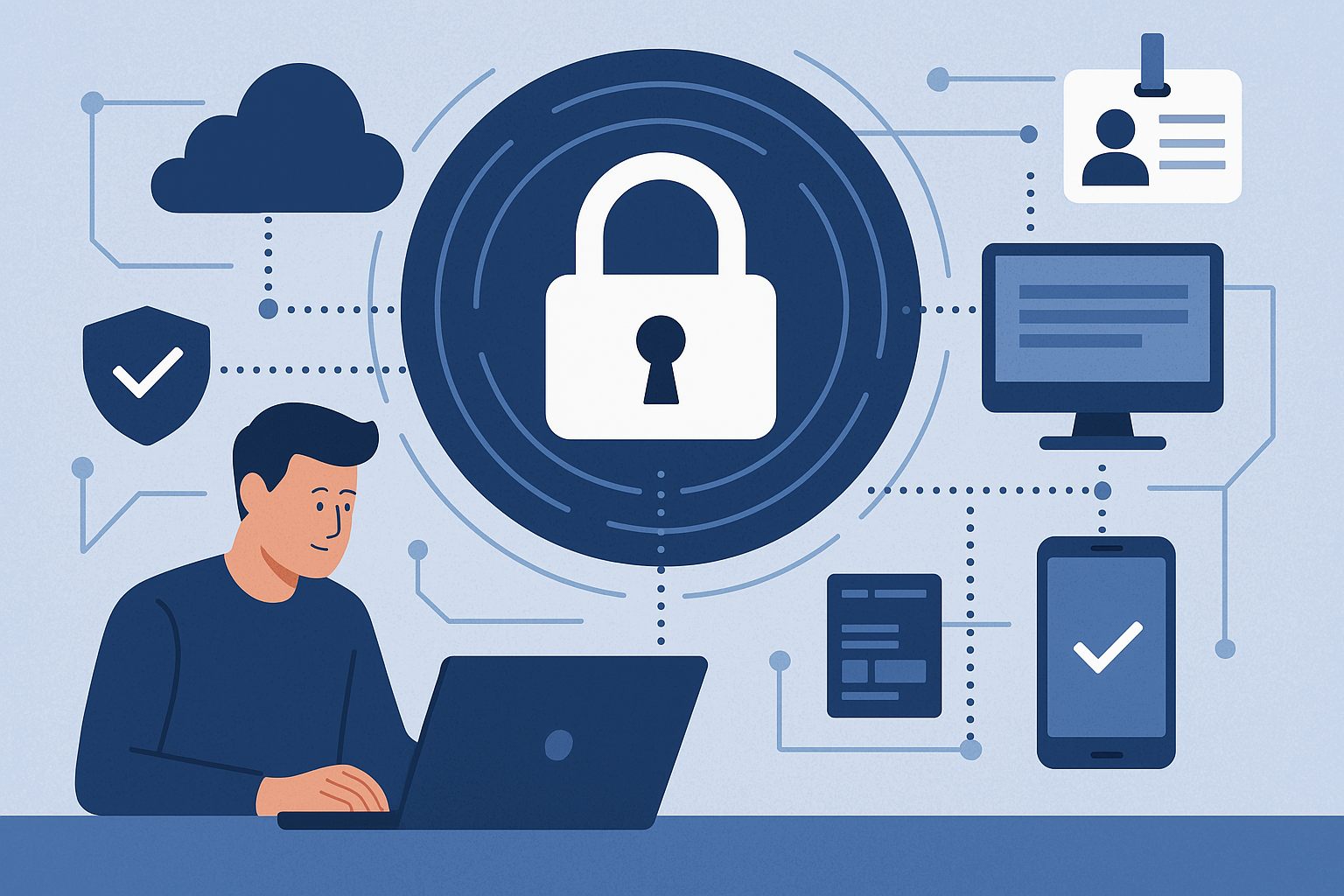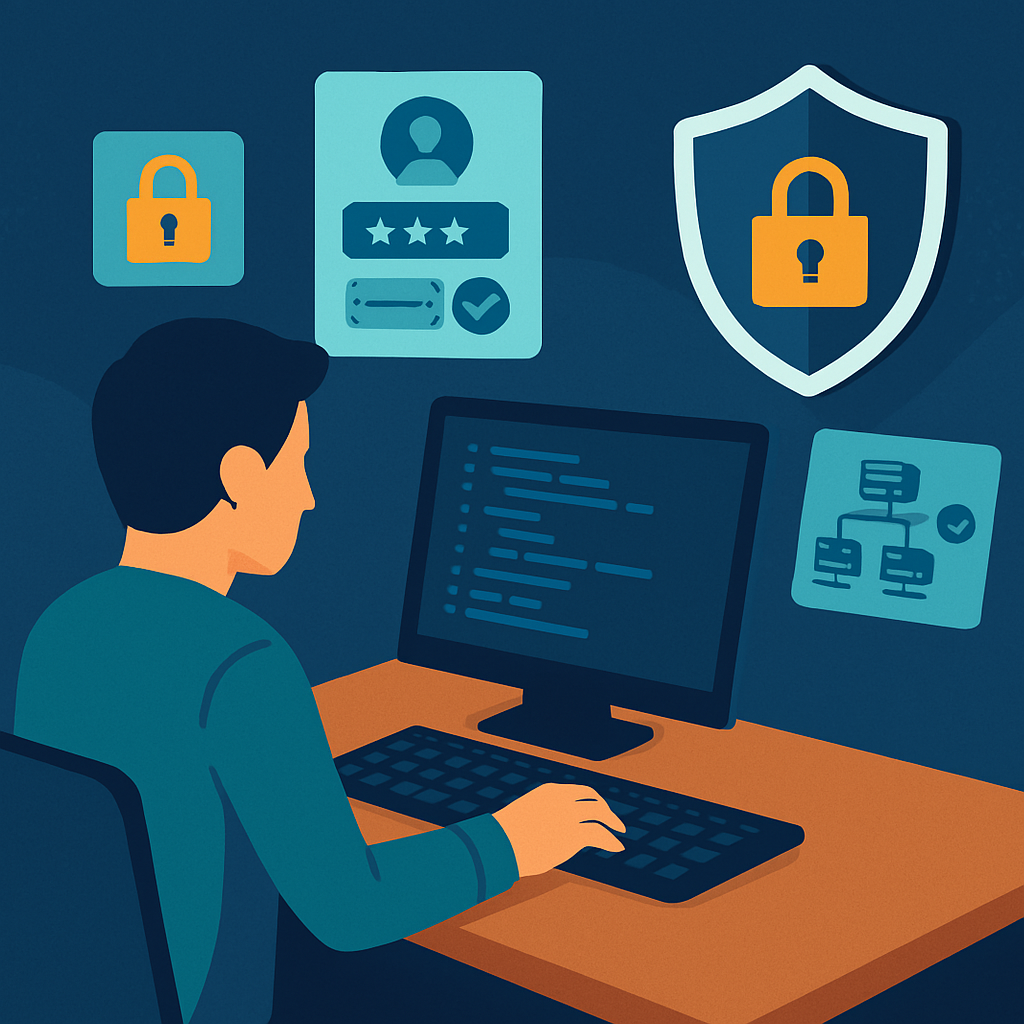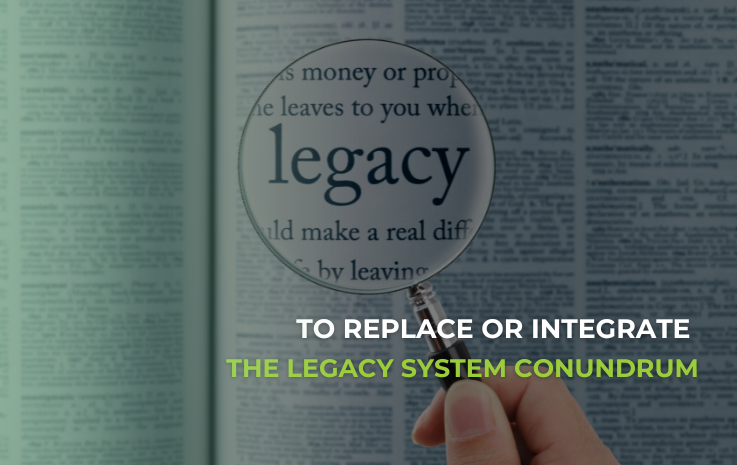
Rethinking Cybersecurity: Why Zero-Trust Architecture Matters for Modern Software Development
Introduction: The Shift Toward Security-First Thinking
As digital transformation accelerates across industries, cybersecurity has evolved from a backend concern into a fundamental pillar of business continuity, innovation, and trust.
In this context, Zero-Trust Architecture (ZTA) has emerged as a powerful framework that redefines how organizations protect their systems, users, and data. It offers a fundamentally different approach compared to traditional network security models – and one that is far better suited to the realities of today’s distributed IT environments.
What Is Zero-Trust Architecture?
Zero-Trust Architecture is based on a simple but transformative principle: “Never trust, always verify.” Unlike legacy perimeter-based models that assume trust within a corporate network, Zero Trust treats every request as untrusted by default – regardless of where it originates.
In practical terms, this means that every user, device, service, and application must be authenticated, authorized, and continuously monitored before and during access to resources. The goal is to limit risk exposure, prevent lateral movement, and detect threats in real-time.
Why the Traditional Security Model Falls Short
Historically, cybersecurity strategies have relied on network boundaries – the idea that once a user or device is inside the perimeter, it can be trusted. However, this model no longer holds up in environments that involve cloud services, remote work, BYOD (bring your own device) policies and microservices.
Attackers today are sophisticated and persistent. Once they breach a single point – often through phishing, compromised credentials, or vulnerable endpoints – they can move laterally inside the network with little resistance. Zero Trust addresses this by removing implicit trust altogether.

Core Principles of Zero-Trust Architecture
Zero-Trust is not a single technology or product, but a security philosophy implemented through multiple components and best practices. Its core principles include:
Identity-Centric Access Control
Every access request is tied to a verified identity – whether it’s a user, application, or device. Multi-factor authentication (MFA), biometric verification, and single sign-on (SSO) mechanisms are essential to ensure robust authentication and reduce credential-based attacks.
Least Privilege and Granular Permissions
Access is granted on a need-to-know basis. No user or system component should have more privileges than absolutely necessary. This reduces the potential damage if an identity is compromised and helps enforce tight boundaries around critical resources.
Continuous Monitoring and Real-Time Enforcement
Zero Trust requires more than one-time authentication. Systems must continuously evaluate access context, user behavior, and risk posture. This enables dynamic responses – such as revoking access, triggering alerts, or enforcing additional authentication in response to anomalies.
Device Health and Endpoint Security
Security posture is not just about who is accessing the system, but what they’re accessing it from. Devices must meet compliance requirements such as up-to-date patches, encryption, and endpoint detection and response (EDR) protections to be considered trustworthy.
Network Micro-Segmentation
Breaking down the internal network into small, isolated segments limits the spread of breaches. If one segment is compromised, attackers cannot move freely across the environment. This is especially effective in hybrid cloud architectures and containerized environments.

mplications for Software Development Teams
For development teams, Zero-Trust principles must be integrated early in the software development lifecycle. Security can no longer be an afterthought or confined to the operations team. Instead, it becomes part of the DevSecOps approach – automated, continuous, and embedded across CI/CD pipelines.
In practice, this means designing APIs with authentication and authorization built-in, defining fine-grained access policies for cloud infrastructure, and conducting rigorous code and dependency scans. Tools such as Infrastructure as Code (IaC) allow security policies to be codified and enforced automatically across environments.
By incorporating Zero Trust into the development process, teams can reduce vulnerabilities, accelerate compliance, and gain visibility into who is doing what across systems and environments.
A Strategic Advantage for Technology Partners
For companies offering technology partnership services Zero Trust is more than an internal security framework; it’s a way to create value for clients.
Clients expect their technology partners to not only build functional and scalable solutions but also to anticipate and mitigate risk. By designing platforms that align with Zero Trust principles, we can ensure our clients’ systems are resilient, compliant, and ready for long-term evolution.
Zero Trust also supports smoother audits, better regulatory alignment (e.g., GDPR, ISO 27001), and enhanced protection for intellectual property. When security is embedded at the architectural level, the result is a more trustworthy, robust foundation for innovation.
The Aleron IT Approach: Security by Design
At Aleron IT, we believe that Zero Trust is not just a technical model – it’s a mindset. Our approach to software development and technology partnership emphasizes long-term scalability, secure integration, and transparent governance.
We help our clients adopt and operationalize Zero-Trust strategies through tailored solutions that reflect their specific needs, infrastructure, and business goals. Whether we are building a new SaaS platform, modernizing legacy systems, or supporting digital transformation projects, security remains at the core of our process.
Conclusion: Zero Trust as a Catalyst for Sustainable Innovation
In an age where breaches can cost millions and reputational damage can be irreparable, a proactive security stance is no longer optional. Zero-Trust Architecture offers a realistic, effective, and forward-thinking model for organizations that rely on complex digital ecosystems.
For Aleron IT and our clients, Zero Trust is not just about reducing risk – it’s about enabling bold ideas, secure collaboration, and sustainable innovation. As we continue to build the future of technology, we do so with a commitment to trust built not on assumptions, but on verification and resilience.



